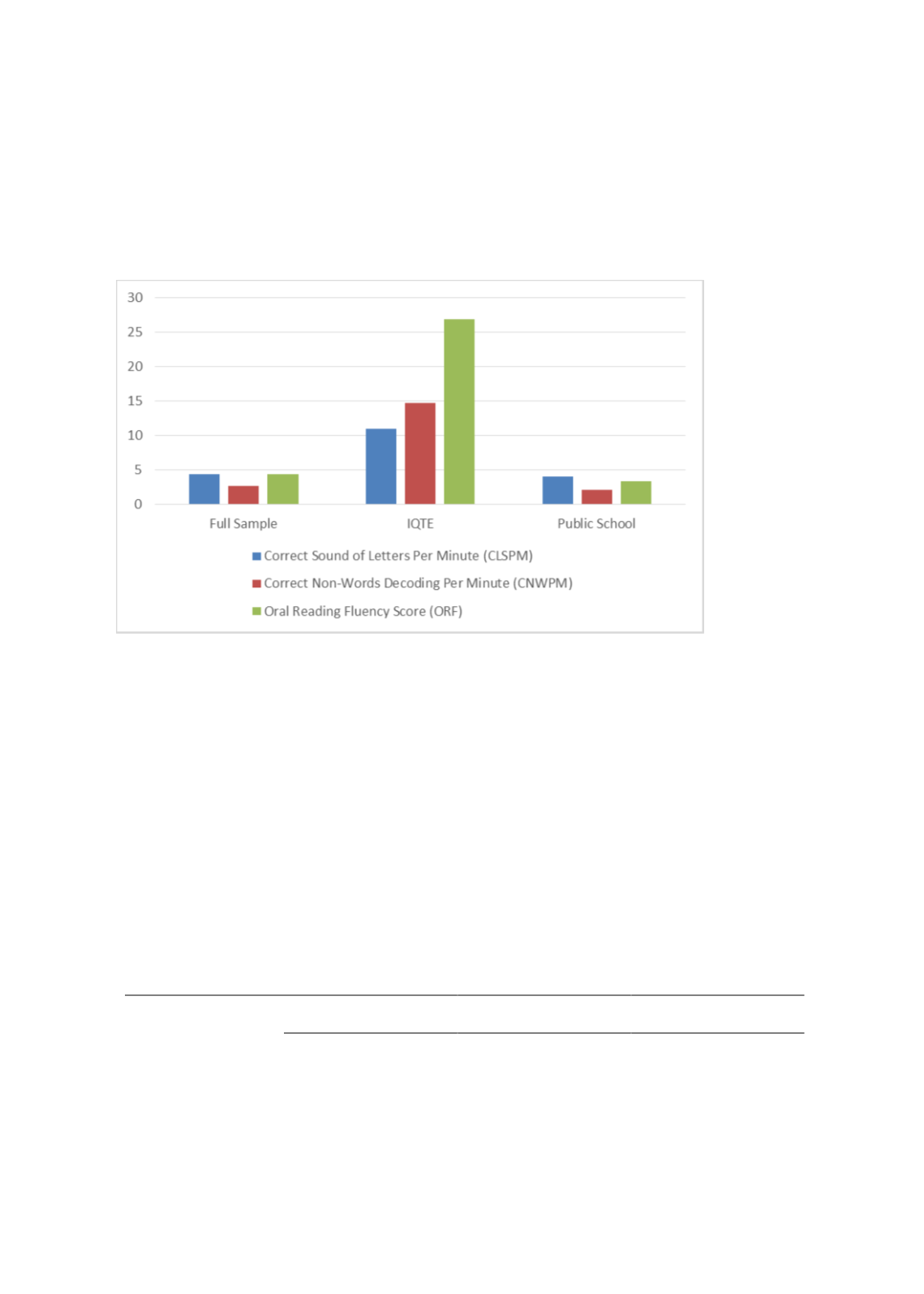

180
of correct non-word decoding per minute (CNWPM), oral reading score (ORF) and reading
comprehension, over 80% student score zero in the main sample. Only in case of listening
comprehension is the percentage of children scoring above zero is high.
Figure 3.4.11: Mean Scores in Correct Letters ğper Minute, Non-Word Decoding and Oral
Fluency, EGRA 2014
Table 3.4.2
presents OLS regression estimates of the determinants of CLSPM, CNWPM and ORF.
Consistent with figure 3.4.1, government school students have noticeably low scores compared
to their peers from IQTE. However, all else equal, spending an extra year in school (i.e. being
enrolled in grade 3) has no significant influence on learning outcomes. The coefficient on pre-
school attendance is only significant (and positive) in case of CNWPM. Another school readiness
indicator, being absent from school last week, is only significant and negative in case of CLSPM.
Eating a meal before coming to school and speaking Hausa at home does not affect learning
outcomes. Turning to family factors, wealth matters only in case of CLSPM – in other two
learning outcomes, wealth variables are insignificant.
Among school-level factors, provisions of a library and toilet are significantly and positively
associated with all there domains of language skills. In contrast, teacher-pupil ratio is always
insignificant. While electricity has a positive correlation, the negative association between
learning outcomes and drinking water provision is counter-intuitive. The (language) teacher
absence on the day of the test significantly lowers test scores in terms of CLSPM and ORF.
Table 3.4.2: OLS Regression Estimates of Competencies in EGRA (Hausa) 2014
(1)
(2)
(3)
VARIABLES
CLSPM
CNWPM
ORF
female
-0.629
-0.951*
-1.516**
(0.513)
(0.377)
(0.585)
Enrolled in grade 3
0.806
0.510
0.586
(0.575)
(0.402)
(0.618)
Government school
-4.156**
-8.645**
-17.13**
(1.171)
(1.292)
(2.283)
















